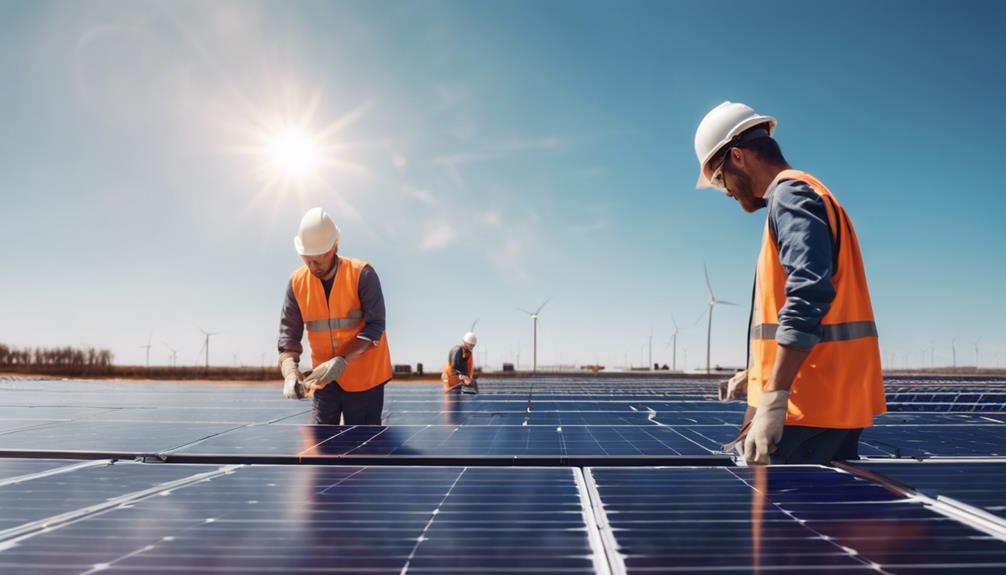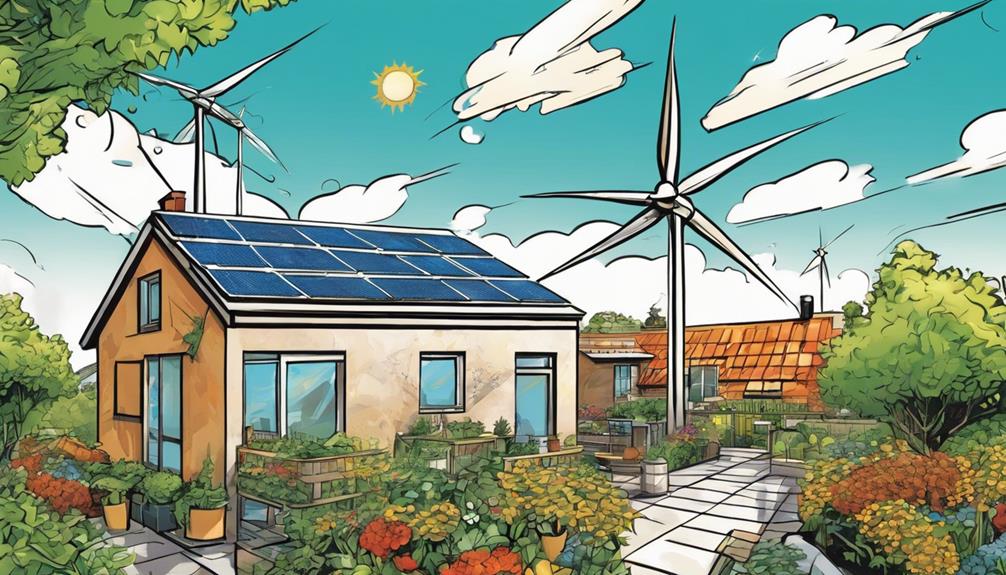Discover how to harness solar farm subsidies effectively to maximize financial benefits and promote sustainability. Through understanding best practices and the latest advancements, you can optimize your investment returns and contribute to a greener future. Benefit from financial incentives like the Investment Tax Credit (ITC) and Feed-in Tariffs, and explore innovative technologies to enhance the profitability of your solar projects. By staying informed and leveraging subsidies, you can accelerate the success of your solar farm while supporting the growth of renewable energy initiatives. Reveal the secrets to accessing the full potential of solar farm subsidies.
Key Takeaways
- Understand ITC and Feed-in Tariffs for financial benefits.
- Optimize financing options like PPAs and rebates.
- Stay updated on government incentives and SRECs.
- Implement best practices like panel optimization and dual land use.
- Embrace advancements for enhanced funding and innovative technologies.
Solar Farm Subsidies Overview
Why are solar farm subsidies essential for the growth of solar energy projects?
Solar farm subsidies, such as the Investment Tax Credit (ITC) and Feed-in Tariffs, provide crucial financial incentives that help offset the initial costs of developing solar farms. These subsidies are instrumental in making solar energy competitive with traditional fossil fuel sources, driving the expansion of solar farm projects globally. Utility companies often rely on these subsidies to make investments in renewable energy more economically viable.
The Tax Credit, for instance, allows solar farm developers to claim a percentage of their investment as a credit against their taxes, reducing the overall cost of the project. This incentive encourages more significant investments in solar energy, leading to the proliferation of solar farm projects.
Understanding and leveraging available subsidies are essential for maximizing the financial benefits of solar farm investments, making them more attractive to both utility companies and individual investors. By taking advantage of these incentives, the solar energy sector can continue to grow and contribute to a more sustainable future.
Maximizing Financial Benefits
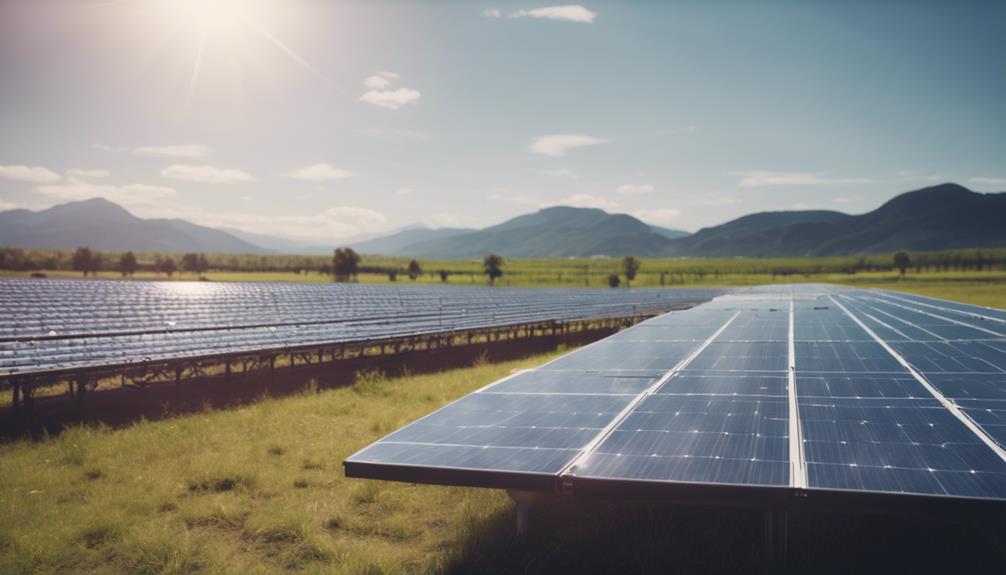
To optimize the financial gains from solar farm investments, exploring various strategies is key. When considering maximizing financial benefits, it's essential to leverage tools like power purchase agreements (PPAs). PPAs secure long-term contracts for selling solar energy at competitive rates, ensuring steady income flow.
Additionally, government incentives such as the Investment Tax Credit (ITC) can cover up to 30% of solar farm costs, significantly boosting financial returns. Feed-in Tariffs also play a pivotal role in enhancing revenue streams by guaranteeing fixed payments for solar energy fed back into the power grid.
Rebates from utilities or state programs further reduce upfront costs, improving the financial viability of solar farm projects. Properly structuring financing options, including loans, leases, or PPAs, can optimize returns and minimize risks associated with solar farm investments. By strategically incorporating these financial strategies, you can maximize the profitability of your solar farm venture.
Navigating Government Incentives
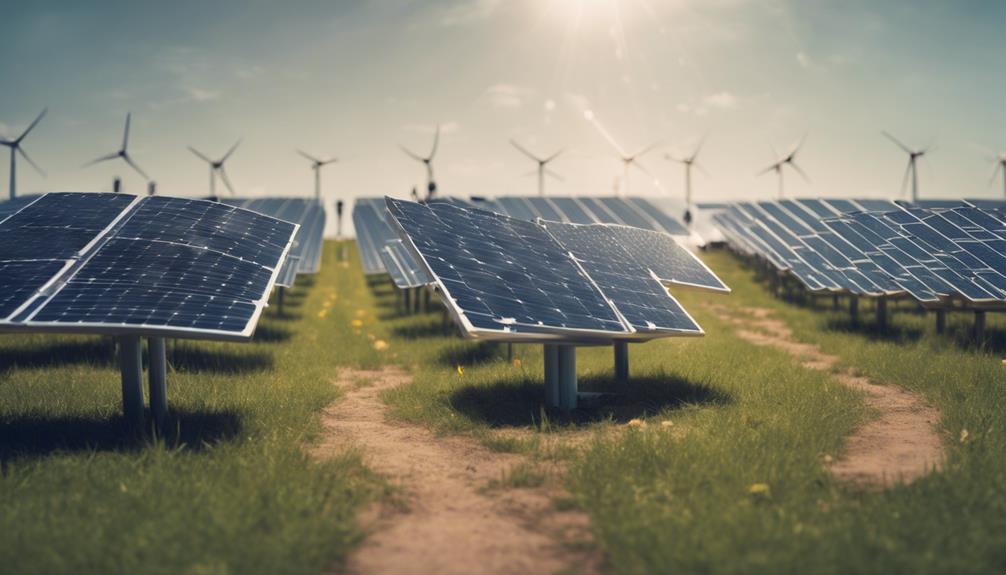
Understanding the nuances of government incentives is vital for successfully navigating the landscape of solar farm investments. Government incentives, such as the Investment Tax Credit (ITC) and Feed-in Tariffs, play an important role in covering a substantial portion of solar project costs and ensuring a stable income stream for solar farm owners.
By familiarizing yourself with the eligibility criteria and application processes for these subsidies, you can maximize the financial benefits of your solar farm investments.
Additionally, Solar Renewable Energy Certificates (SRECs) offer an opportunity to generate additional revenue by selling credits for clean energy production. Leveraging these government subsidies not only supports the financial viability of solar farms but also significantly reduces payback periods, ultimately enhancing the overall profitability of your solar farm projects.
Stay informed about the various incentives available in your region and make strategic decisions to optimize the financial returns on your solar farm investments.
Implementing Best Practices
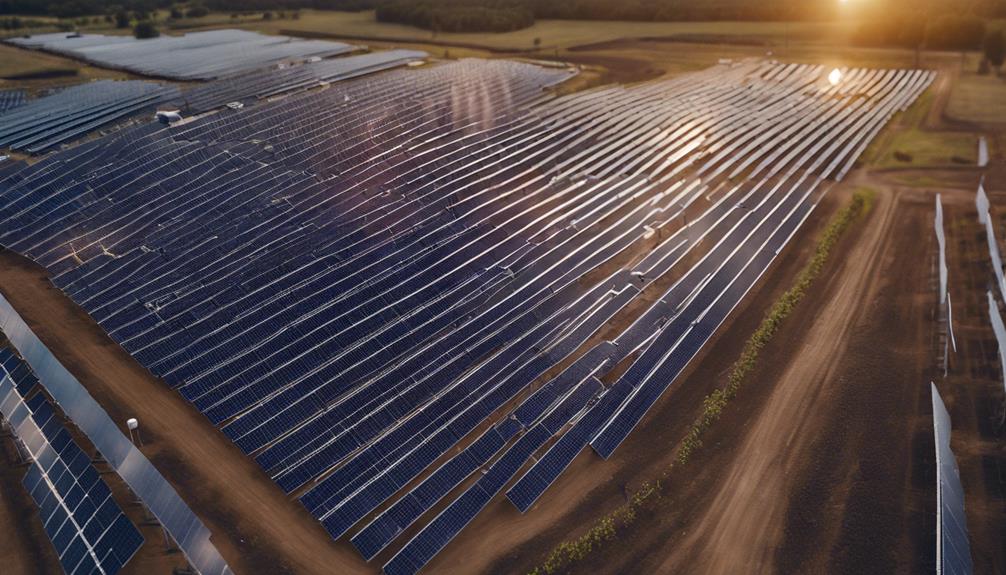
Maximizing sunlight exposure and land use efficiency are key factors in implementing best practices for solar farm development. By optimizing panel orientation and tilt angles, you can significantly boost energy production. Efficient land use strategies, such as combining agriculture with solar power generation, not only increase sustainability but also enhance overall project viability. Technological advancements in monitoring systems and maintenance practices play a crucial role in ensuring the long-term performance of solar installations. Additionally, integrating energy storage solutions like batteries can improve grid stability and maximize the utilization of solar power subsidies. Regular performance evaluations and data analysis are essential for identifying areas for improvement and guaranteeing compliance with subsidy requirements. These practices are vital for achieving optimal efficiency and financial benefits in solar farm development.
| Best Practices | Benefits |
|---|---|
| Panel optimization | Increased energy production |
| Dual land use | Enhanced sustainability |
| Advanced monitoring | Improved performance |
| Energy storage | Maximizing subsidy utilization |
Advancements in Subsidy Programs
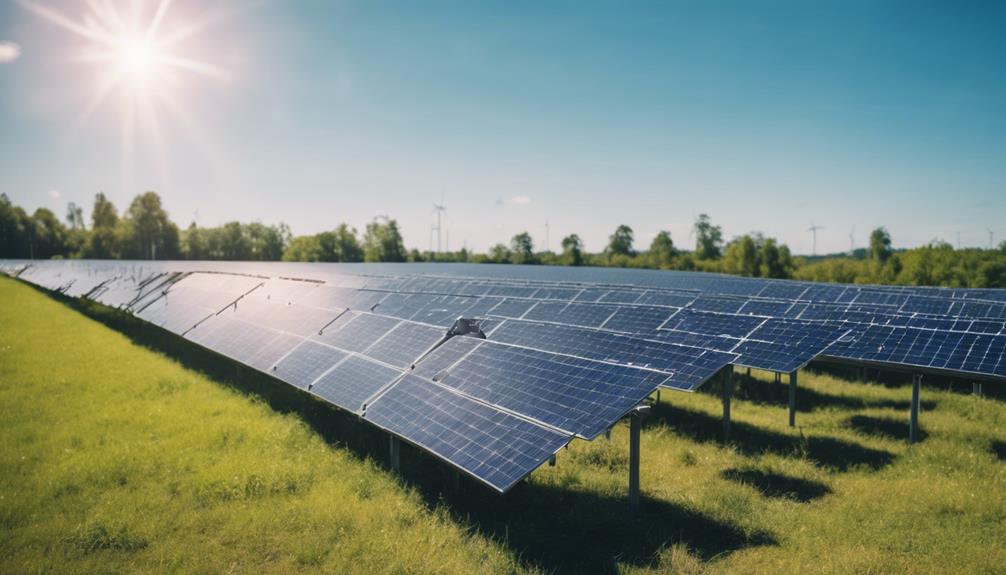
Many subsidy programs have developed to offer increased funding and streamlined processes for solar projects, promoting accelerated development of solar farms. Advancements in solar technology have driven subsidy programs to provide higher incentives and quicker approval timelines, ensuring a more efficient shift to renewable energy sources.
Here are three key advancements in subsidy programs:
- Enhanced Funding Opportunities: Advancements in solar panel efficiency and manufacturing have led to increased funding from federal, state, and local incentives, making solar farm investments more attractive and financially viable.
- Streamlined Application Processes: Subsidy programs now offer streamlined application procedures, simplifying the steps required for solar farm development and ensuring quicker approval timelines, facilitating the implementation of solar projects.
- Focus on Innovative Technologies: Emerging subsidy programs prioritize supporting innovative solar technologies, energy storage solutions, and grid integration, fostering the growth of sustainable and cutting-edge solar projects in the renewable energy sector.
Frequently Asked Questions
Why Do Economists Think Subsidies for Solar Production Are Good?
Economists think subsidies for solar production are good because they drive down costs, boost competitiveness against fossil fuels, create jobs, spur innovation, and accelerate the shift to sustainable energy. These benefits support economic growth and environmental goals.
How Much Subsidies Does Solar Get?
You get subsidies for solar projects like the Investment Tax Credit (ITC) offering a 26% tax credit in 2022. It's essential to capitalize on current incentives before they decrease in 2023. State and local incentives further support solar farm development.
What Is the ROI of a Solar Farm?
When evaluating the ROI of a solar farm, factors like sunlight exposure, location, and government incentives play a vital role. Calculating ROI involves considering operational costs, maintenance, and revenue from selling electricity.
Why Does Mr. Schwarting Face Difficulties When It Comes to Repairing His Tractor?
You face difficulties repairing your tractor due to the lack of specialized parts, advanced technical knowledge required for modern tractors, and limited access to repair manuals. These challenges hinder your ability to diagnose and fix issues independently.
What Impact Does Subsidies Have on the Production of Energy in Solar Farms?
Subsidies play a crucial role in boosting solar farm energy production per acre. By providing financial support, governments encourage the use of renewable energy sources, leading to increased production of energy in solar farms. This ultimately contributes to a more sustainable and environmentally friendly energy system.
Conclusion
To sum up, remember that the average solar farm receives about $1.5 million in subsidies, making it a lucrative investment for both the environment and your wallet.
By taking advantage of government incentives and implementing best practices, you can maximize your financial benefits while contributing to a more sustainable future.
So, don't wait – start exploring solar farm subsidies today and reap the rewards for years to come.
